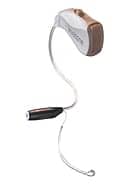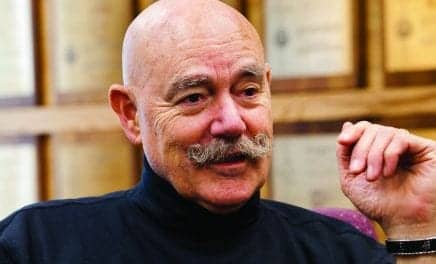Dear Editor: With personal and subjective interest I read the recent editorial in the Hearing Review June 2014 issue on RITE/RIC devices (Staff Standpoint: The RIC as a Disruptive Technology). As an inventor of the receiver-in-the-ear (RITE) in-the-canal (RIC) open ear amplification, any news and my “ears perk up.” I continue to be drawn to any information regarding RITE/RIC in our professional media.
May I then add few comments:
1) It is reassuring to see a continued growth of this style of amplification. From my personal surveys of talking to my colleagues (when I teach tinnitus seminars to various groups of audiologists), if this can be considered a pseudo survey, anywhere between 70-80% of RITE hearing aids are used in their private practices.
2) A bit of historical facts regarding RIC/RITE: I would take issue with the statement that “the open fit revolution, in part” was initiated, “by the commercial success of Resound Air.” Resound Air was introduced to the market much later than the Vivatone RITE device. If my recollection is correct, this was in 2006. When examining the industry sales, it becomes clear that, starting in the beginning of 2004, RITE hearing aids started to be part of the hearing industry market and dominate the consumer’s market in 2008. Also, the introduction of the Sebotek—a fully occluded ear device—did not produce any impact on the hearing aid market. It was not until the introduction of the open ear RITE/RIC in 2004 by the Vivatone Company when the market trend started to shift from custom device to the RITE/RIC fittings.
3) Finally, I agree that there will always be a place for custom devices, which will make the 3D ear scan technology happy. On the other hand, I foresee that some will be the off-the-shelf, non-custom devices just like the Lyric design with one size fits most (with apologies to the 3D scan technology companies).
With personal bias, I admit, humbly submitted.
—Natan Bauman, PhD, audiologist, inventor, and owner of the Hearing, Balance and Speech Center and the New England Tinnitus and Hyperacusis Clinic.
Editor’s response
The editor thanks Dr Bauman for his comments and has great respect for both him and his creation of the Vivatone hearing aid. The article incorrectly states that Vivatone started in 2008. In fact, Dr Bauman was kind enough to give me an exclusive preview of the Vivatone RIC/RITE during the 2004 AAA Convention. And, yes, I was impressed. The Hearing Review published our first news item about his device shortly after that meeting in May 2004 (p 65).
To the best of my recollection, GN’s ReSound Air open-fit BTE was introduced in mid- to late-2003, and I believe I even talked off the record with GN’s Jodi Krusemark about its promising development at the previous Jackson Hole Rendezvous (maybe Autumn 2002?). What is certain is that The Hearing Review ran our first advertisement for ReSound Air in November 2003 (p 17).
Likewise, even earlier, the March 2003 Hearing Review (p 97) included a 2/3-page news story, introducing brothers Mike and Jim Feeley and their new hearing aid at the time, the Sebotek PAC. The company began advertising its PAC deep-fitting hearing aid in Hearing Review in May 2003 (p 29). From my understanding, the PAC was a commercial success, although I do not know what kind of unit volume it represented.
As a footnote, in our “What’s New?” section of the September 1995 issue (p 21), I interviewed Dan Anderson (and Delain Wright) at Rexton about their new CIC•BTE hybrid hearing aid—the patent for which would ultimately be purchased by the Feeley brothers at Sebotek and become the subject of a patent infringement lawsuit within the industry.
My only point here is that all of the above played important roles in the establishment of today’s RIC/RITE. However, none of this historical quibbling detracts from Dr Bauman’s considerable contributions to the development the device. Again, to the best of my knowledge, the Vivatone hearing aid was the first open-fitting system incorporated into a mini-BTE with an earbud-type device—what one could view as the first “open-fit RIC.” In the long historical view, it might even be seen as something of a Reeses’ peanut-butter-cup collision of the ReSound Air (open-fit BTE) and PAC aids (closed/deep-fit RIC).
According to mid-year 2014 statistics generated by the Hearing Industries Assn (HIA), RIC/RITEs constituted 56.6% of the US hearing aid market. Although it’s impossible to tell what percentage is made up of open-fit instruments, it’s obviously a large proportion of sales. And Vivatone played an important role in launching the open-fit RIC/RITE revolution—starting in 2004.
By no means am I the definitive authority on this subject (I’m guessing there are many marketing and product managers who have a more detailed timeline), and others are welcome to chime in with their own perspective. Thanks for sharing your viewpoint, Dr Bauman.
— Karl Strom, editor
Update (August 20 & 21, 2014): After publishing this letter online, three Hearing Review readers pointed out that the ReSound Avance BTE actually preceded the ReSound Air BTE as an open-fit BTE. Avance was a 2-channel BTE originally introduced to provide an economical dispensing alternative to combat Internet/OTC device sales. It was discontinued in 2003. For example, audiologist Paul Milner wrote on the Hearing Review LinkedIn page:
A product that deserves mention is the ReSound Avance, which is probably the granddaddy of the open fit devices. For those who remember it, this was a little analog device with a single trimmer control to adjust the high frequency gain. It used slim tubes to bring sound into the ear canal. Too much gain produced feedback, so the control had to be adjusted judiciously. Eventually, the ReSound Air was introduced with digital technology, advanced feedback management, and multiple channels to tailor the response. The Air also used slim tubes. As for the Vivatone hearing aids, the introduction for me took place in New Haven, CT, on February 19th, 2004, a date that will always hold a special place for me since that was the day my first grandchild was born.
Also, I contacted Claus Nielsen, the curator of the Eriksholm collection of hearing aids at the Oticon research center in Denmark, because I seemed to remember a conversation we’d had many years ago about this topic. Claus said that Oticon introduced an open-fit aid in 1989. It was called the E43 mini BTE, developed for people with high frequency hearing loss. The aid was re-launched in 1992 as the Personic 430. —KES





